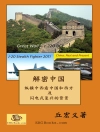The contrast in the rate of growth between Western and Eastern societies since 1800 has caused Asian societies to be characterized as backward and resistant to change, though until 1600 or so certain Asian states were technologically far in advance of Europe.
The Rice Economies, drawing on original source materials, examines patterns of technological and social evolution specific to East-Asian wet-rice economies in order to clarfiy some general historical trends in economic development.
The contrast in the rate of growth between Western and Eastern societies since 1800 has caused Asian societies to be characterized as backward and resistant to change, though until 1600 or so certain Asian states were technologically far in advance of Eur
Содержание
List of figures and tables
Chinese dynasties
Japanese eras
Preface
Acknowledgements
Maps
Introduction
Eurocentric models of historical change
An alternative model
The significance of a model of development for rice economies
1 The rice-plant: diversity and intensification
The origins of Asian rice
Natural characteristics of rice
Selection techniques
2 Paths of technical development
Building new fields
Raising yields
Labour productivity and the mechanisation question
3 Water control
Water control and institutions: the debate
A technical classification of water control systems
Gravity-fed irrigation networks
Ponds, tanks and reservoirs
Contour canals
‘Creek’ irrigation
Pump irrigation schemes
Patterns of growth and change
4 Rice and the wider economy
‘Skill-oriented’ and ‘mechanical’ technologies
The specificity of wet-rice agriculture
Uniformity and systemic change
Monoculture and markets
Economic diversification
Petty commodity production and rural industrialisation
5 Development
Some basic issues
Labour and capital
The historical experience: the predominance of labour and the ‘Japanese model’
Choice of technological inputs
Capital investment
Productivity of labour and capital
Expertise and participation
6 Peasant, landlord and state: changes in relations of production
Conflict, cooperation and control
Historical changes in relations of production
’Feudal’ relations and frontier zones
Smallholder economies: expansion and stagnation
Egalitarianism or differentiation: the impact of capitalism
Land and landlessness
‘Land to the tiller’
Group farming
Socialist land reform
Appendix A: The Western model
Appendix B: The historical experience of China
Appendix C: The Japanese experience
Notes
References
Glossary
Index
Об авторе
Francesca Bray is Professor of Anthropology at University of California, Santa Barbara and author of Agriculture, Volume VI, part 2 in Joseph Needham’s Science and Civilization in China (1984).












